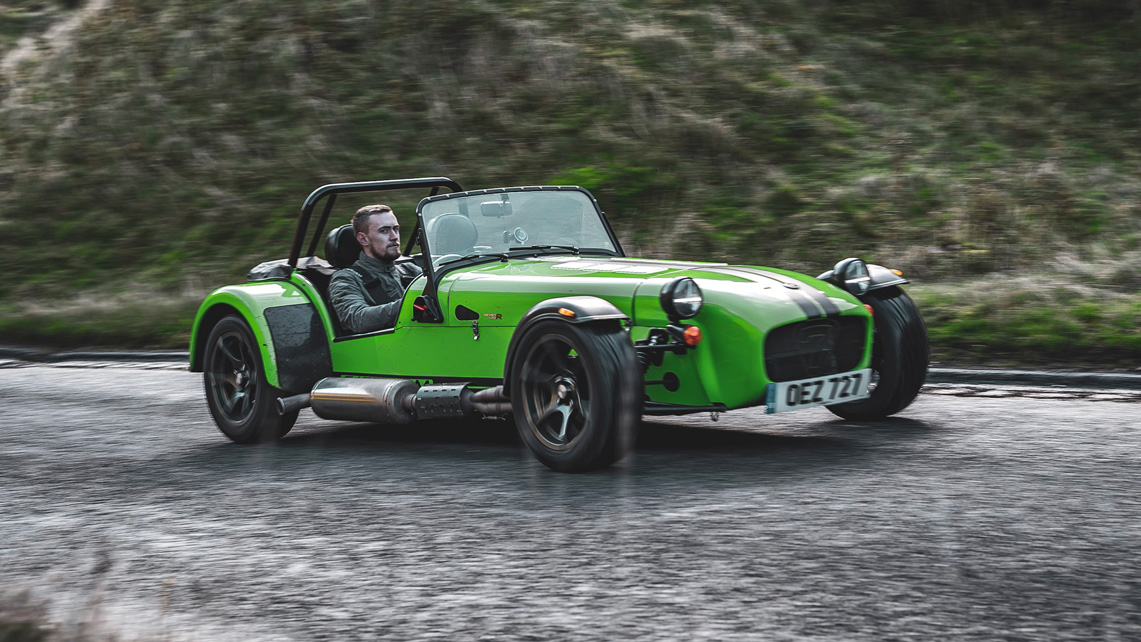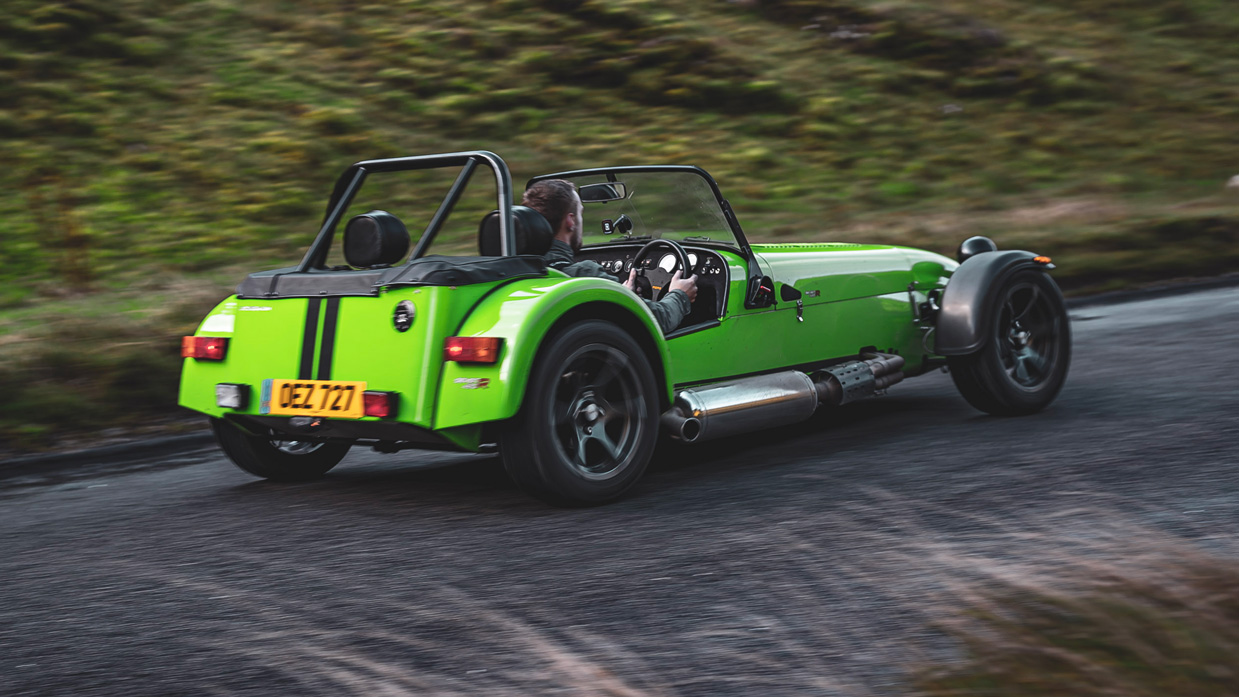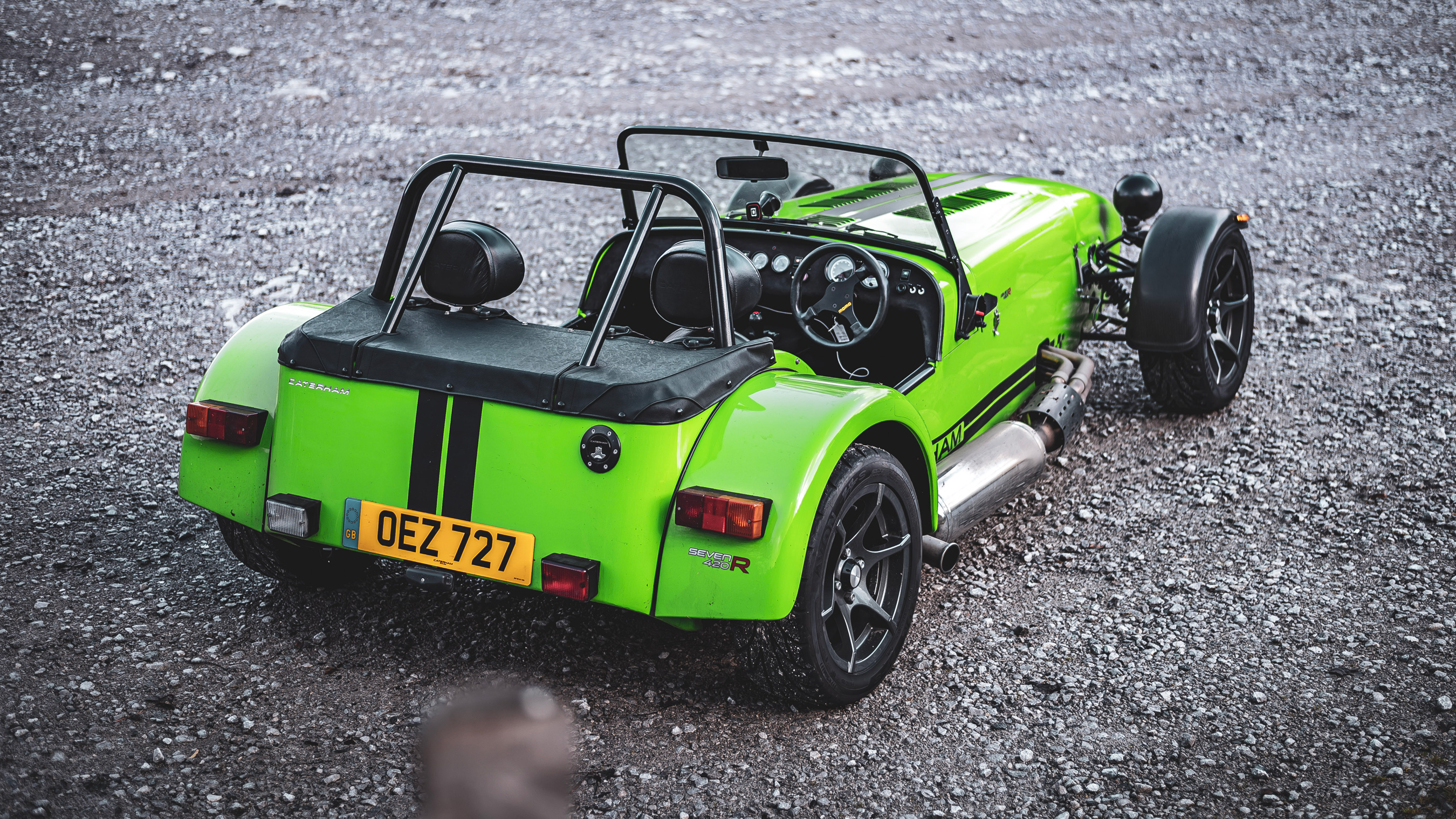
Caterham Seven 420R review: pure driving thrills and a complete bargain
What’s new about the Caterham Seven 420R?
In truth, not a lot. But we’ve usually been seduced by the bookends of the Caterham range. We’re either hanging on for dear life in the utterly berserk 620R, or being charmed by the low-power delights of the three-cylinder 170R.
So a 420R is basically Caterham’s middle of the range model?
Pretty much – if it was a Porsche, it would be a 911 GTS. It’s not the fastest nor the most extreme member in the family, but it could very well be the lip-smacking sweet spot.
Should be pretty easy to decipher the spec…
Correct: one of the reasons we like Caterham is because their strategy – like their cars – is refreshingly nonsense-free.
Take the names as an example: they’re all denoted by the power-to-weight ratio. A 620R weighs about half a tonne and has 310bhp, giving it 620bhp-per-tonne. This 420R meanwhile, uses a dry-sumped version of the 2.0-litre four-cylinder Ford engine that’s in the 360R. It’s tuned up to deliver 210bhp, and the new lubrication system means there’s no danger of oil starvation when lapping a track at high Gs.
What about the ‘R’ bit?
Having selected how quickly you’d like to punt yourself up the road, Caterham’s next option is to ‘S’ or to ‘R’. Go for a 420S and you get carpets, road-biased suspension and leather seats. All jolly nice if you just want a toy to pop to the post office in, but not really in the spirit of how visceral modern Caterhams can be.
No, what you want is the R pack. Now you’re talking lightweight composite seats, carbon fibre everywhere (the mudguards, the dashboard, and much of the inner bodywork) and a lightweight flywheel for snappier rev-matching. Caterham throws in a limited-slip diff, so every junction exit becomes an excuse for a slide. You get race harnesses, a beefier brake master cylinder, and a shift-light to remind you to change gear. Useful, since you probably won’t be able to hear yourself think when the manic engine guns past 7,600rpm.
How fast are we talking?
The performance is frightening: if you can change gear fast enough, 0-60mph is there for the taking in 3.8 seconds. The sprinty gearing means the 420R is all done by 136mph, but that’s plenty.
When your backside is this close to the ground and you’ve got about as much weather protection as a North Sea trawlerman, 30mph feels like land speed record territory.
For £36k before options (the must-have R pack is £1,000), it’s a bargain for performance on four wheels. You’d need an Audi RS3 to keep pace with it off the line – a £50k+ car. In the corners, the hatchback couldn’t brake as late, and the Caterham would get on the power earlier. It’d be worth buying one just to go to track days and wind up noobs in 911s and GT-Rs.
Okay, by the time you’d have had a dabble with the options and paid Caterham £2,600 to build it rather than you risking spannering the brakes on inside-out, it’s more likely to be mid £40ks. But you’ll still struggle to find something at similar money that can dump similar quantities of adrenaline in your bloodstream (legally).
Top Gear
Newsletter
Thank you for subscribing to our newsletter. Look out for your regular round-up of news, reviews and offers in your inbox.
Get all the latest news, reviews and exclusives, direct to your inbox.
Is it the Caterham sweet spot?
We’d have to say yes – much as the 620R’s ability to even exist and be legal gladdens us, the hit delivered by the 420R can be savoured that little bit longer, and the numbers are all a bit less terrifying. Caterham’s insiders also hint that once you get beyond 200 horsepower, you’re into diminishing returns.
Any spec titbits?
Yes – add the £700 ‘Trackday roll cage’. This is the first Seven I’ve driven with the optional large cage instead of just the rear roll bar, and there are three reasons why it should be ticked.
One: it looks purposeful and cool. Not convinced? Okay then.
Two: it makes hauling yourself in and out easier, as you’ve got a hefty structure to brace yourself on without risking tugging the fragile windscreen.
Three: it adds stiffness to the chassis that noticeably reduces the Seven’s natural scuttle-shake on very undulating B-roads. So, you get a safer, gnarlier looking, more usable car for £500. Sure, it makes the roof more of a pain to erect, but if you’re in the market for one of these, safe to say you’re not an individual who’s fretting much over trifling practicalities such as ‘staying dry’. Buy a coat.
Isn’t the Seven getting a bit old now?
It’s been getting old for longer than that. Caterham’s been making them in various forms since the Seventies, and before the Seven was a Caterham, it was a Lotus, dating back to the 1950s.
But modern tyres, brakes and suspension mean beneath the cartoon kitsch looks, it’s a seriously sorted driver’s car. And as cars continue to get more complicated, more autonomous, and just ‘more’ in size and weight and cost, the Seven just keeps on getting more relevant and refreshing.
We’ll confess, we thought we’d use it on a sunny Sunday afternoon then park it up and pocket the kill switch. Instead, the Seven did 400 miles in its week in the TG garage, through rain, hail, rush-hour traffic and some of the best B-road blasts we’ve ever had.
So, just because it looks gawky, don’t ever think the Seven is past it. As a 420R, it’s up there with the very best British sports cars – which means it’s also among the best cars, full stop.
Photography: Will & Phil Bradley
Featured

Trending this week
- Car Review
BMW 1 Series






